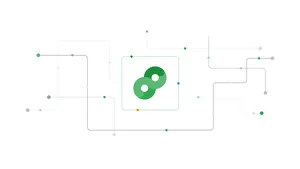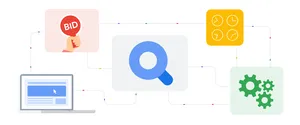3 tips to maximize budget efficiency across media

In an increasingly fragmented media landscape, making good use of your ad dollars is a tall order. Using a siloed strategy means you’re at risk of unintentionally reaching the same people more often than desired. This can lead to an ineffective use of your budget and poor user experience.
For years, we’ve seen leading brands improve the efficiency of their ad operations and media using Display & Video 360 as a way to unify their campaigns across inventory sources, devices and markets. Today, we’ll share these marketers’ three best practices with some of their latest success stories highlighting key features to unify their media. Display & Video 360 continues to future-proof these tools using a combination of advanced machine learning technology, first-party data signals and privacy-preserving APIs.
Plan and forecast reach in one place
This is where it all begins. Plans that take your entire media mix into account are inherently more accurate. And planning solutions that are tightly connected to your media buying platform can let you more accurately and quickly assess the potential reach of your plans. Display & Video 360 planning tools let you estimate the reach of your campaign across any type of environment or inventory source — including web, audio, connected TV (CTV) and even linear TV.
Reckitt is a global brand that found success optimizing its budget allocation for Airborne campaigns using Display & Video 360’s reach planning capabilities. Reckitt decided to diversify its media mix beyond traditional TV ads to boost its presence on CTV. So, it started looking for a planning tool that could account for CTV streamers. Harnessing Display & Video 360 forecasting solutions, the company estimated how much incremental reach could be gained by bringing together all its CTV deals — YouTube, Disney, The CW and Discovery — in the same campaign. The tool let them create accurate, custom media plans. By pulling insights like optimal spend and reach, Reckitt could compare the effectiveness of different campaign types. Armed with these insights, the company reached over 11 million CTV households within their core audience while keeping its spend under control. Reckitt also ensured these viewers weren’t duplicative with their traditional TV audience, generating 18% more viewers by adding CTV ads to their TV mix.
Combine various inventory sources in one place
I remember days when programmatic buying was just about serving standard display ads on the web. We’ve come a long way since then. Over the years, we’ve added access to thousands of publishers and all sorts of new inventory sources in Display & Video 360. For example, using digital out-of-home, brands can now reach people out in the real-world with the efficiency of programmatic technology. Today Display & Video 360 already partners with exchanges Hivestack, Magnite, Place Exchange, Ströer SSP, VIOOH and Vistar Media. These exchanges give access to large media owners around the world like Clear Channel Outdoor, Intersection, JCDecaux, Lamar and Ströer.
With more top media companies like Disney making their inventory available programmatically, connected TV advertising gives brands another exciting terrain to engage with their customers. Today 93% of ad-supported connected TV households in the U.S. can be reached with Display & Video 360, according to comScore. 1 We’re also continuing to unlock top CTV inventory around the world. For example, you can now reach people watching Peacock, NBCUniversal’s ad-supported streaming service in the U.S. or Channel 4's programming in the U.K. And all these top CTV placements can be purchased alongside other programmatic ads in a consolidated CTV workflow featuring parameters applicable to any source of CTV inventory — whether it’s Hulu, YouTube, Paramount or any other publisher. This TV-specific insertion order makes it easier to optimize for common goals or control ad frequency across your entire CTV media mix.
Manage frequency in one place
With Display & Video 360, you can manage ad exposure across media buys while respecting user privacy, even when third-party cookies and identifiers are not present. Frequency can be managed across any type of device and transaction type including CTV and Programmatic Guaranteed deals across a variety of exchanges.
And you can get a tailored assessment of the impact of cross-channel frequency management solutions: Display & Video 360’s self-service data visualization shows how much reach was gained due to effective frequency management at the campaign level.
This is how Audi turbocharged its incremental reach. To launch its all-new Q4 e-tron electric model in Germany, the automaker needed a cost-efficient way of reaching as many cord-cutters as possible with a new video campaign. The brand decided to use frequency management across a mix of standard in-stream video formats and exclusive Programmatic Guaranteed deals from well-known publishers. Having a real-time view of reach gains gave the brand and its media agency more precision in evaluating campaign performance. During the six-week campaign, Audi assessed that managing programmatic campaigns across channels in a consolidated way allowed the brand to reach 1.2 million additional unique users — or a 13% rise in incremental reach — without bumping up budgets.
With a similar approach, L’Oréal Germany was able to increase the reach of its Garnier Greentalk campaign by 16% at no extra cost.
Looking forward, we’ll ensure these media unification capabilities remain accessible to all Display & Video 360 users while respecting people's privacy online. In fact, we’ve already started enhancing these solutions using a combination of machine learning techniques and first-party data signals so they keep working in the future. For example, Unique Reach metrics already go beyond basic cookie measurement to help you understand how many times people were shown your ad across different devices, formats and networks. And Display & Video 360 already uses modeled frequency management in situations with limited user signals.
These are just a few examples of the benefits of consolidating media. We also see advertisers who take a unified approach to media buying enjoy unified reporting, rationalized budgeting, and streamlined billing. As we move forward, we’ll keep adding more functionality to advertisers’ and media agencies’ toolbox to help them get better return from their unified media budgets.





